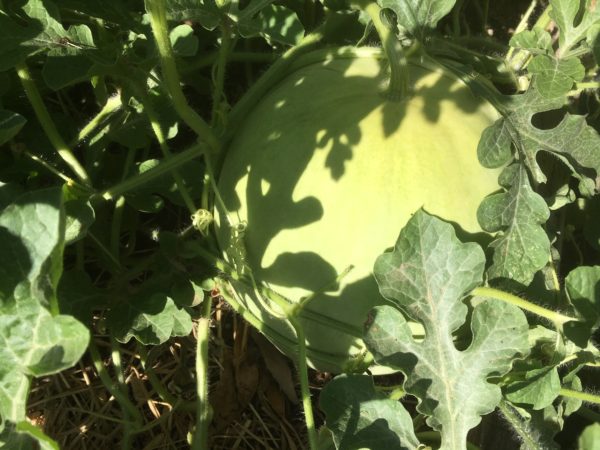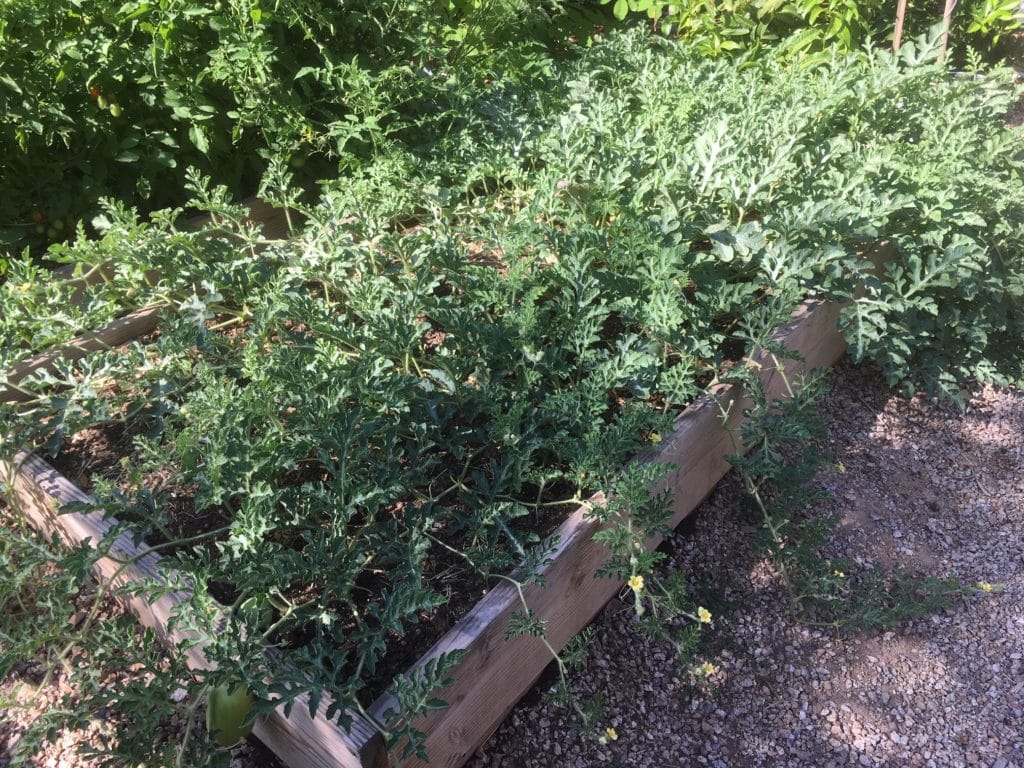10 Secrets to Grow Watermelon in the Arizona Desert (Hot Climates)

Arizona has long been considered one of the top producing states for watermelon. It’s believed that watermelon originated from the African deserts, so one would think it’s well adapted to a hot, dry climate like Arizona.
For several years, my attempts at growing this wonderful summer fruit failed time and time again. After a few years, my favorite fruit, became my nemesis plant to grow. I kept tinkering with different methods, until I ultimately became successful growing them. Let’s take a look at what works and what doesn’t.
A Proven Winner

First off, there are several common varieties that reportedly do well in Arizona like Sugar Baby, Congo, Crimson Sweet, and Charleston Gray. I have seen some of these varieties do well for others, but they didn’t for me. I tried other varieties with minimal success, until I struck gold with the Desert King Watermelon. With a name like Desert King, it had to be a winner for hot, dry climates. It lives up to the name.
This heirloom variety has been an amazing producer and has been my go to variety year after year. If you’re new to growing watermelon in a hot, dry climate start here. I continue to tinker around with other varieties, but I always make sure to grow a crop of Desert King.
Desert King is an orange fleshed variety, but still contains that classic sweet, crisp, watermelon taste. The outer rind is a pale green almost cream colored. Due to the color, it seems to take our scorching desert sun very well. This variety is extremely drought tolerant and wants to produce melons all year long. The fruits are good size ranging from 20-25 pounds. It handles our soil conditions well.
What Not to Do When Growing Watermelon
As I’ve previously mentioned, through the many failed attempts I’ve had trying to grow watermelon, I learned a lot of things along the way. I’ll start with things that should be avoided if you want to ensure a bountiful crop.
Buying Cheap Seeds
Avoid buying poor quality seeds from the big box type stores. In my early days, I went with these types of seeds, and suffered because of it. There are many great places to order heirloom, organic, disease resistant seeds online. I have no affiliation, but am a huge fan of Baker Creek for purchasing seeds. You can save heirloom seeds for future planting. Exchanging seeds with other local gardeners is another great option.
Transplanting
Transplanting is doable, but watermelon plants do best when seeds are directly sown in the ground or raised bed. Some plants are great to get a head start indoors and plant out when the climate is right, but melons aren’t one of those. For whatever reason, when you disturb the roots it can really stunt the growth process. In hot climates, the growing season is generally long enough that you don’t need to worry about starting them indoors.
Planting too Early
In Phoenix, Arizona, since we lack humidity, we tend to have major temperature fluxuations from night to day. Temperatures can change 30 to even 40 degrees, especially in the cooler times of the year. It’s tempting to try to plant early when the daytime temps start feeling warmer in early February, but those colder nights will cause the plant to grow extremely slow. I tend to start planting in March as the night time temps start warming a bit.
Overwatering
Surprisingly, watermelon plants can be fairly drought tolerant. Since a watermelon is made up of mostly water, it’s easy to think that it would need frequent watering. I’m not saying a watermelon doesn’t need or like water, it’s just better to give it a long deep soak, versus short duration’s every day. A lot of new gardeners in our desert have a difficult time figuring out proper watering techniques.
Planting in a Small Space
Watermelon plants are space hogs. I dedicate one of my entire raised beds to this plant and it still ends up growing well outside the box. This can be a great plant to just let roam in a corner section of the yard or even train to trellis. Growing some of the icebox or smaller size watermelons is more ideal if trellising. Even then you may have to utilize something to secure the watermelons from dropping.
RELATED POST: Smart Strategies to Maximize your Garden Space
Tips for Getting Great Results Growing Watermelon

Over time, I was able to identify some keys for growing watermelon in my harsh climate. Following some proven methods will help increase your probability for success when attempting to grow watermelon. Here are some things that have given me consistent results growing in the Arizona desert.
Feeding
Watermelons are hungry plants. I start by making a large mound of my rabbit manure compost and directly sow the seeds in the mound. This provides a slow steady dose of nutrients throughout the season. I may periodically fertilize with liquid fish emulsion and seaweed, check these out at my recommended products page by clicking here.
It’s extremely important to utilize things like manure or high quality compost for favorable outcomes. Watermelon typically like more Nitrogen when the plant is initially growing then begin utilizing higher Phosphorous and Potassium when flowering. I use this 0-10-10 Fish emulsion during flowering, click here for current pricing. The soil makes all the difference.
RELATED POST: Should I Use Manure for Fruit Trees
Disease Resistance
Planting disease resistant plants can increase the probability of success. There are some common diseases that affect watermelon plants like mildew, but are less prevalent when the air remains dry. It’s still a good idea to get disease resistant seeds.
Water Properly
As previously discussed watering properly is going to help the plant thrive. Using a drip or the hose on a slow drip is very effective. Watering with a spray or getting the leaves frequently wet is when the plant becomes more susceptible to diseases. It’s a good idea to cut back on watering when the melons are close to ripening to allow the fruit to produce the maximum amount of sugar content. A layer of mulch can help keep the soil moist.
Keep it Healthy
Watermelons can be adversely affected by pests like aphids, whiteflies, cucumber beetles, and squash bugs. I’ve found that the healthier the plant, the more it’s able to find off pests. Creating the optimal growing conditions will allow the plant to be strong.
Harvest at the Right Time
It can be a bit of an art form when it comes to harvesting watermelon. One thing to look for is the curly tendril growing near the stem. If this has turned brown and dried up, it’s a good indication that the watermelon is ready. Also take a look at the overall appearance of the watermelon. If the underside where the melon has been resting is a rich creamy color and the overall appearance of the melon has good color it’s time to harvest.
Final Thoughts
A watermelon plant doesn’t have to be your nemesis, like it was for me. There’s nothing better the enjoying a magnificent watermelon on a hot summer day. Watermelons are made for hot, dry climates. With a basic understanding and following these tips, it can be an easy plant to grow, and you’ll be on your way to harvesting a bountiful crop.
Please comment below on anything that you’ve enjoyed from this post or your experiences growing watermelon in hot, dry climates.

Hi! I live in Anthem and just ordered Desert King seeds. Is it too late to start them in late April?
Thanks!
Christin